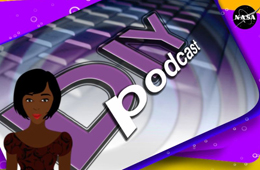As you start a new school year, our NASA education team hopes you’re planning to include the DIY Podcast as a classroom project. It’s a ready-made resource for engaging your students in STEM topics. You may be trying to decide between audio and video as you set the stage for your students to create their own podcasts featuring NASA astronauts and technical experts.
A good starting point is to pinpoint what you’re trying to achieve. Is your focus on sharing knowledge and information, or do you want to demonstrate a concept or activity? Demonstrations are usually enhanced by visual productions. Straight information and content-rich interviews and sound bites are well-suited for audio productions.
Try to anticipate how people are likely to use your product. If you think they’ll take time to watch it on their computer or mobile device, video may be the right choice. If it’s more likely they would want to listen to your students’ podcast while doing other things, audio may be better. Audio works well for multitaskers who might not stop what they’re doing just to watch a video. Generally speaking, video is a foreground medium and audio is a background medium.
An important consideration is the time and equipment required to produce your podcast. Audio usually takes much less time to produce than video, and the equipment costs less. Audio files are smaller than video files, which may be a key factor if bandwidth is a concern for you.
The popularity of online video continues to soar. Educators recognize the power of visual communication. Research suggests that more than 80 percent of human learning occurs visually. Combining audio and visual elements leaves a strong, long-lasting impression.
Since the whole point is to engage your students, you may want to ask them which medium they would prefer to create. And remember to create a podcasting rubric before you begin the assignment.
DIY Podcast Home

